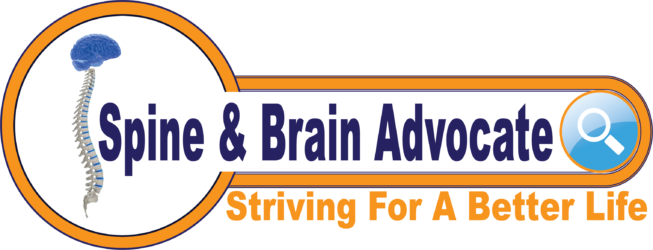Fainting (Syncope) and Tilt Table Test
“A tilt table test is a test done to evaluate symptoms of syncope (fainting). If you have syncope, your healthcare provider will carefully evaluate your past medical history and do a physical exam. If the results of the exam or history do not show a cause for the syncope, and you have no history of heart disease, then further test may be scheduled.
A tilt table test attempts to determine the cause syncope by creating changes in posture from lying to standing. You will lie flat on a special bed or table with special safety belts and a footrest while connected to electrocardiogram (ECG) and blood pressure monitors. The bed or table is then elevated to an almost standing position (60° to 80° vertical angle) to simulate standing up from a lying position. The blood pressure and ECG are measured during the test to evaluate changes during the position changes. If the test causes you to faint, the table will quickly be returned to a flat position to help you regain consciousness. The information collected can then be used to help your healthcare provider prescribe treatment.
Why might I need the tilt table test?
You may need a tilt table test if you have recurring fainting and other causes were ruled out.
Syncope, or fainting, may be caused by various medical problems. Syncope may occur rarely to frequently, depending on the cause. Some causes of syncope may include:
- Vasovagal syndrome (also called neurocardiogenic syncope). This is a sudden drop in blood pressure with or without a decrease in heart rate. It’s caused by an exaggerated response of nerves that control the heart and blood vessels.
- Arrhythmia. This is when a heart rate is too slow, too fast, or is irregular. When this happens, the heart can’t get enough blood flow to the body.
- Structural heart disease (problems of the heart muscle or valves). Enlargement of the heart muscle or malfunction of one or more of the heart valves may block blood flow within the heart.
- Heart attack (also called myocardial infarction or MI). This is damage to the heart muscle due to insufficient blood supply.
- Cardiomyopathy ventricular dysfunction. This is a weakness or failure of the pumping function of the ventricles (the heart’s major pumping chambers.
There may be other reasons for your healthcare provider to advise a tilt table test.
What are the risks of the tilt table test?
Possible risks of tilt table testing include:
- Planned episodes of syncope (fainting)
- Dizziness or headache
- Low blood pressure or high blood pressure
- Nausea
- Palpitations or change in heart rate
There may be other risks depending on your specific medical condition. Be sure to discuss any concerns with your healthcare provider before the test.
How do I get ready for the tilt table test?
- Your healthcare provider will explain the test to you and you can ask questions.
- You will be asked to sign a consent form that gives your permission to do the test. Read the form carefully and ask questions if something is not clear.
- Tell the technologist if you are allergic to or sensitive to any medicines or latex.
- Fasting may be required before the test. Your healthcare provider will give you instructions as to how long you should withhold food or liquids.
- If you are pregnant or think you may be, tell your healthcare provider.
- Tell your provider of all medicines (prescription and over-the-counter) and herbal supplements that you are taking.
- Tell your healthcare provider if you have a pacemaker or an implanted cardioverter defibrillator.
- Arrange to have someone drive you home after the test, as you will most likely be told not to drive afterwards.
- Based on your medical condition, your healthcare provider may request other specific preparation.
What happens during the tilt table test?
A tilt table test may be done on an outpatient basis or as part of your stay in a hospital. Procedures may vary depending on your condition and your healthcare provider’s practices.
Generally, a tilt table test follows this process:
- You will be asked to remove any jewelry or other objects that may interfere with the test.
- You will be asked to remove clothing from the waist up and will be given a gown to wear.
- You will be asked to empty your bladder before the procedure.
- You will lie down on a special bed or table.
- An IV line may be started in your hand or arm to inject medicine and to give IV fluids, if needed.
- ECG electrodes will be placed on your chest and attached to an ECG machine with wire leads. A blood pressure cuff will be placed on your arm and will be attached to an automatic blood pressure monitoring machine. Your blood pressure may be measured using an invasive blood pressure monitor called an arterial line instead of a non-invasive blood pressure cuff. The arterial line can provide more rapid measurement of blood pressure changes.
- You will lie flat on the bed initially, then you will be raised to an almost standing angle while on the bed. Straps will be placed across your chest and legs to keep you from falling if you faint during the test.
- You will remain upright for up to 45 minutes to determine if symptoms such as dizziness, fainting, low heart rate, or a low blood pressure occur.
- If no symptoms occur, you may be given a medicine in your IV to speed up your heart rate. This will be given while you are lying flat again.
- After the medicine is given (if needed), you will again be tilted upright and monitored for symptoms of dizziness, fainting, low heart rate, or a low blood pressure.
- Once enough information is obtained, you will be lowered to a flat position and allowed to rest for a while. Your heart rate and blood pressure will be monitored.
- When you are stable, the IV line, blood pressure cuff or arterial line, and ECG electrodes will be removed.
- You will be allowed to dress and leave, unless your healthcare provider tells you differently.
What happens after the tilt table test?
You should be able to resume your normal diet and activities, unless your healthcare provider instructs you differently.
Generally, there is no special care following a tilt table test.
Tell your healthcare provider if you develop any signs or symptoms you had before the test (such as, dizziness or fainting).
Your provider may give you other instructions after the test, depending on your situation.” Johns Hopkins Medicine Reference

